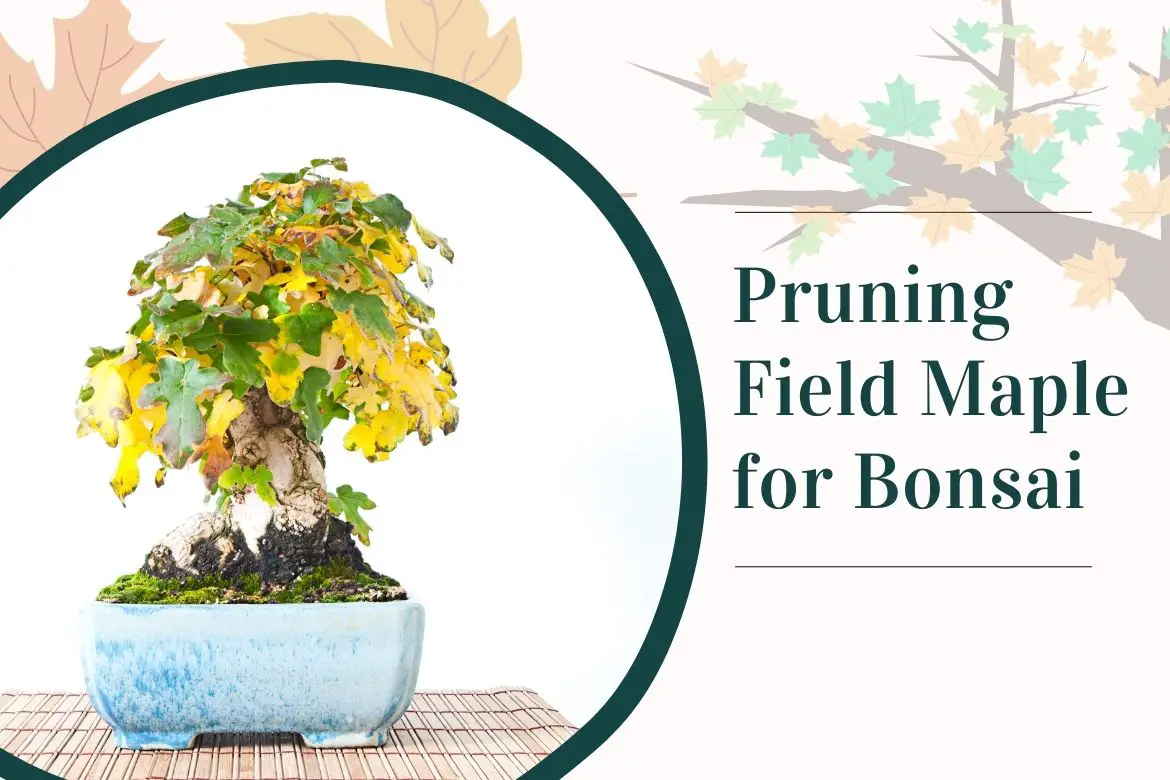Field maple is a popular species for bonsai due to its small leaves and attractive bark. Pruning is an important part of maintaining a healthy and aesthetically pleasing field maple bonsai. Here are some tips for pruning field maple bonsai:
- Use sharp, clean pruning shears to make clean cuts. This will reduce the risk of damage to the tree and help promote healthy new growth. Continue reading about bonsai pruning tools.
- Pruning long shoots back to a dormant bud just before bud burst is recommended every year.
- New shoots should be pruned back to one-third of their length (two leaves) throughout the growing season.
- Leaf size reduction: To reduce the overall size of the leaves, cut off the largest in early or mid June, leaving the stalks. The leaf stalk will drop by it self. When new leaves appear, water sparingly.
- Complete leaf defoliation: Field maple responds very well to complete defoliation. Reduction in size of the leaves of field maple bonsai can also be achieved by complete defoliation. Do it every 3 years.
- Heavy pruning: Do heavy pruning in the spring (which is also repotting time) when new buds are about to burst.
- Increase the thickness of the trunk by pruning: To increase the trunk thickness, allow as many branches to grow as possible, then prune these branches. Remove major branches during the summer, when the sap flow has slowed down. This will help to produce smaller callouses and reduce any bleeding. These small wounds will soon callous over and vanish as the bark grows over them.
- One more thing you can do to increase the trunk thickness is prune off all the branches and plant the tree in the ground. Depending on the your desired size and thickness of the trunk, you may even have to let it grow on the ground for almost 2 years and letting it grow without any pruning. Feed the tree well and water it adequately (specially in dry weather). This will result in shrubby branches and shoots emerging in all directions. As the shoots are well distributed, the trunk thickens nicely.
- Sacrificial branches to increase the thickness of the trunk: If you wish, you can also allow ‘sacrificial branches‘ to grow on the lower parts of the trunk. These branches will also help the trunk to gain girth. When you think that you have achieved the desired thickness of the trunk, prune the sacrificial branches. If you are growing more than one sacrificial branch, then remove them gradually over the years. Also, have these sacrificial branches on the back side of the tree. So that the large pruning wounds don’t show up at the ‘front’ of the tree. By this method, a substantial trunk can be created in a relatively short time.
- Remove branches near the base to expose the lower trunk, making it appear more tree-like.
- Remove any dead, diseased, or damaged branches. These can be pruned back to the main trunk or to a healthy branch.
- Identify any branches that are growing straight up or down, or crossing over each other. These can be pruned back to a healthy branch or removed completely.
Continue reading about how to prune a bonsai tree (with pictures). Also read detailed guide on field maple bonsai care. With proper care and pruning, your field maple bonsai can become a beautiful and healthy addition to your collection.


